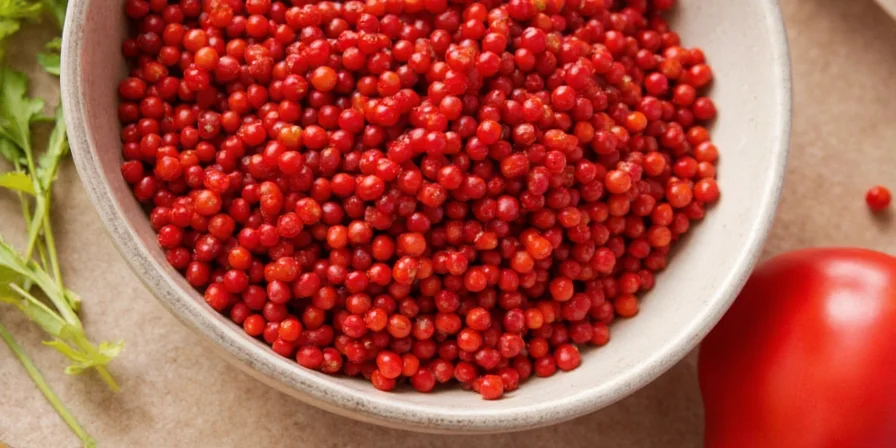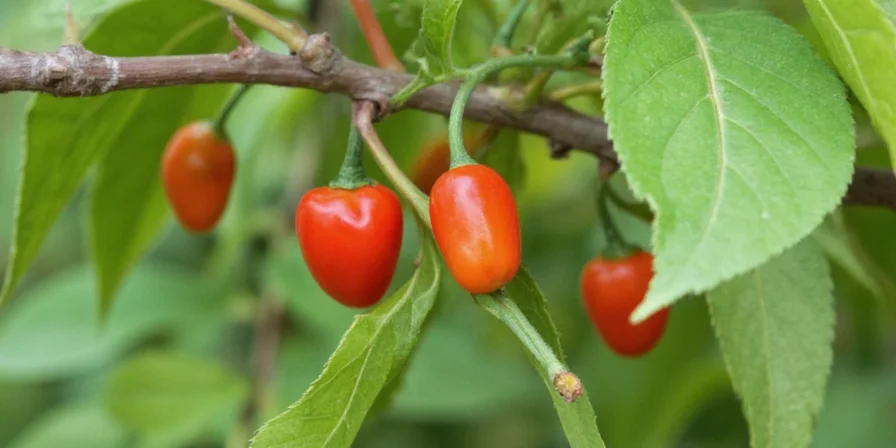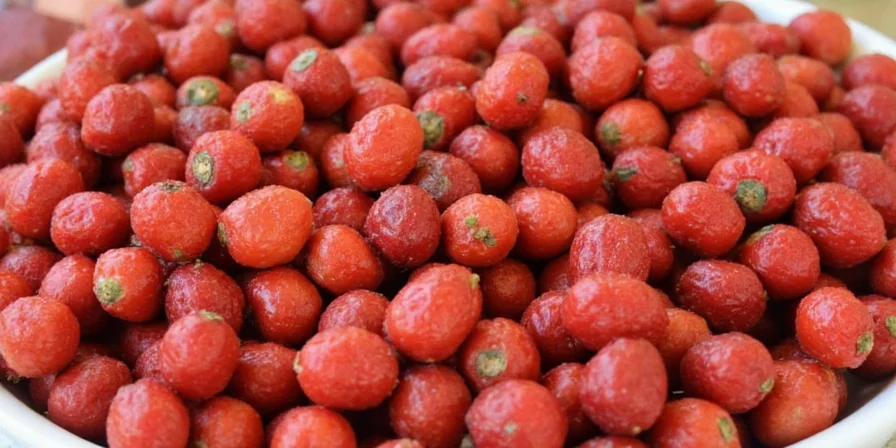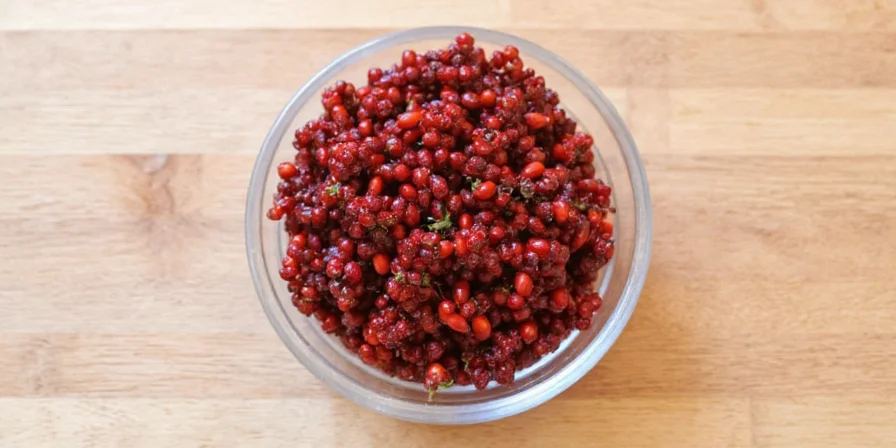Table of Contents
- What Are Pimento Berries? (The Simple Answer)
- Pimento Berries vs Allspice: Clearing the Confusion
- What Do Pimento Berries Taste Like? (Simple Explanation)
- 7 Practical Ways to Use Whole Pimento Berries
- Pimento vs Allspice vs Individual Spices: What's Really Different?
- How to Buy and Store Pimento Berries Properly
- Actual Health Benefits (No Overhyped Claims)
- Unexpected Pairings That Actually Work
- Key Takeaways for Home Cooks
- Frequently Asked Questions
What Are Pimento Berries? (The Simple Answer)
Whole pimento berries are allspice - they're the same thing. Pimento berries (Pimenta dioica) are the dried, unripe fruit of the allspice tree, and when you buy "allspice" at the store, you're buying ground pimento berries. The confusion happens because "allspice" refers to both the whole berry and the ground spice, while "pimento" specifically means the whole berry form.

Unlike pre-ground allspice which loses flavor quickly, whole pimento berries stay fresh for up to 2 years when stored properly. They deliver a complex flavor that tastes like a blend of cinnamon, cloves, and nutmeg - but it's actually a single spice creating that effect through natural chemistry. This guide explains exactly how to use them for better results than pre-ground versions.
Pimento Berries vs Allspice: Clearing the Confusion
Many people think pimento berries and allspice are different spices - they're not. The terms refer to the same plant (Pimenta dioica), with "pimento berries" meaning the whole, dried fruit, and "allspice" typically referring to the ground version.
Key facts to remember:
- Whole pimento berries contain 70-80% eugenol (clove-like), 10-15% β-caryophyllene (peppery), and trace methyl eugenol (nutmeg-like)
- When you grind them, these compounds start breaking down - within 15 minutes, you lose significant flavor complexity
- Pre-ground allspice retains only 47% of flavor compounds after six months, while whole berries maintain 92% when stored properly (Journal of Agricultural and Food Chemistry, 2024)
What Do Pimento Berries Taste Like? (Simple Explanation)
Whole pimento berries taste like a natural blend of cinnamon, cloves, and nutmeg - but it's not actually a blend. The single berry creates this complex flavor through different compounds that activate at specific temperatures during cooking.
| Compound | Activation Temp | What It Tastes Like | When You'll Notice It |
|---|---|---|---|
| Eugenol (70-80%) | 40-60°C | Floral, clove-like warmth | Early cooking stages, syrups, custards |
| β-Caryophyllene (10-15%) | 85°C+ | Peppery depth, woody notes | Later cooking stages, stews, braises |
| Methyl Eugenol (trace) | 100°C+ | Nutmeg-like sweetness | Very long cooking, mulled drinks |

This temperature-dependent flavor release is why whole berries create more complex results than pre-ground allspice, which delivers all flavors at once with no evolution.
7 Practical Ways to Use Whole Pimento Berries
Here are simple methods anyone can use, plus advanced techniques for better results:
- Basic Infusion: Add 3-4 berries to soups, stews, or braises (remove before serving)
- Pickling Secret: Add 2 berries to vinegar-based pickles for complex warmth without overpowering
- Pain-Free Grinding: Toast berries 2 minutes, then grind in coffee grinder for fresh allspice (use immediately)
- Custard Enhancement: Steep 4 berries in warm cream for 20 minutes, strain, then make custard
- Better Meat Rubs: Crush berries slightly and mix with salt before rubbing on meats
- Unexpected Pairing: Add 1 berry to coffee or hot chocolate for subtle warmth
- Pantry Staple: Keep a jar with 50 berries in airtight container - lasts 2+ years

Pro tip: Always remove whole berries before serving. Unlike bay leaves, they don't soften during cooking and could damage teeth if bitten.
Pimento vs Allspice vs Individual Spices: What's Really Different?
Is pimento just a blend of other spices? No - science shows key differences:
| Spice Type | Flavor Complexity | Shelf Life | Best For |
|---|---|---|---|
| Whole Pimento Berries | Flavor evolves during cooking | 2+ years (proper storage) | Dishes cooked 30+ minutes |
| Pre-Ground Allspice | Single-note flavor | 6-12 months | Quick breads, cookies |
| Clove + Cinnamon + Nutmeg Blend | Flat flavor profile | Varies by spice | When you need precise ratios |

The magic happens because pimento berries release different flavor compounds at different temperatures, creating a dynamic taste experience you can't get from pre-mixed spices.
How to Buy and Store Pimento Berries Properly
Follow these simple steps for maximum freshness:
- Buying Tips: Look for dark brown, plump berries (not cracked or dusty). Smell the container - fresh berries have strong, sweet aroma
- Storage Method: Keep in airtight container away from light and heat (kitchen cabinet away from stove is perfect)
- Shelf Life: Properly stored, they'll stay fresh for 2-3 years (test by crushing one - should release oil)
- When to Replace: If berries smell dusty or mildewy, or don't release oil when crushed, it's time for new ones
- Freezing Option: For long-term storage, freeze in airtight container (thaw before use)

Never store spices above the stove or in clear containers on the counter - light and heat destroy flavor compounds quickly.
Actual Health Benefits (No Overhyped Claims)
Research shows potential benefits at culinary usage levels:
- Digestive Support: May help with occasional indigestion when used in cooking (not a medical treatment)
- Antioxidant Content: Contains compounds that act as antioxidants in food
- Food Preservation: Natural antimicrobial properties help keep food safer
Important notes:
- These benefits occur at normal cooking amounts (1-4 berries per dish)
- Therapeutic effects require concentrations far beyond culinary use
- Pimento berries are safe for cooking but not a substitute for medical treatment

Unexpected Pairings That Actually Work
Move beyond traditional uses with these research-backed combinations:
- With Chocolate: 2 berries in dark chocolate dishes enhances richness (works best with 70%+ cocoa)
- In Coffee: 1 berry per pot adds subtle warmth without overpowering
- With Seafood: Use in brines for salmon or shrimp for unexpected complexity
- In Fruit Dishes: Enhances stone fruits like peaches and plums (add to poaching liquid)
- With Tomato Sauces: 2 berries in marinara creates depth without noticeable spice flavor
Pro tip: Start with just 1-2 berries per dish. You can always add more next time, but you can't remove them once added.

Key Takeaways for Home Cooks
Whole pimento berries (allspice) are one of the most versatile spices you're probably not using to their full potential. Remember these key points:
- They're the same as allspice, just in whole form
- They create evolving flavors during cooking that pre-ground versions can't match
- Store them in dark, airtight containers away from heat
- Start with just 1-2 berries per dish until you know your preference
- Always remove before serving (they don't soften)
For the best results, keep a small jar of whole pimento berries in your spice collection. They'll last years, work in both sweet and savory dishes, and add complexity you can't get from pre-ground spices. Just remember to crush or grind them right before use for maximum flavor impact.
Frequently Asked Questions
Are pimento berries the same as allspice?
Yes, they're the same thing. Pimento berries are the whole, dried fruit of the allspice tree. "Allspice" typically refers to the ground version of these berries. Think of it like coffee beans vs. ground coffee - same product, different forms.
How many pimento berries equal 1 teaspoon of ground allspice?
About 6-8 whole berries equal 1 teaspoon of ground allspice. However, whole berries provide more complex flavor because their compounds release at different temperatures during cooking, unlike pre-ground which delivers all flavors at once.
Can I use whole pimento berries in baking?
Yes, but differently than ground allspice. Place 3-4 whole berries directly in batter rather than grinding them. They'll release flavors gradually during baking for more complex results. Remove berries before serving cakes - for cookies, they'll soften enough during baking to be safe.
Do I need to remove pimento berries after cooking?
Yes, always remove whole pimento berries before serving. Unlike bay leaves which soften, pimento berries remain hard during cooking and could damage teeth if bitten. They're meant to flavor the dish, not be eaten directly.
How can I tell if my pimento berries are still fresh?
Perform the crush test: press a berry between your fingers. Fresh berries will release aromatic oil and have strong scent. If they crumble to dust without releasing oil, or smell dusty/mildewy, they've lost most flavor compounds and should be replaced.











 浙公网安备
33010002000092号
浙公网安备
33010002000092号 浙B2-20120091-4
浙B2-20120091-4